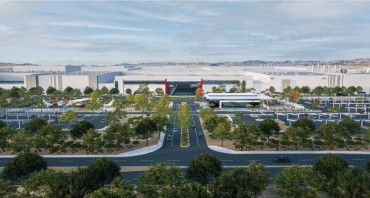
Average retail prices approached 10,000 won per head, earning the vegetable the nickname “golden cabbage.” (Image courtesy of Yonhap)
SEOUL, Oct. 28 (Korea Bizwire) – In an unprecedented sign of climate disruption, South Korean authorities issued 681 extreme heat warnings across the country during and immediately after the autumn Chuseok holiday on September 18-19.
The heat was so unusual for autumn that some joked the harvest festival should be renamed from “Chuseok” (Autumn Evening) to “Haseok” (Summer Evening).
The impact of this unseasonable heat wave has now reached McDonald’s restaurants across the country. On October 15, McDonald’s Korea began removing tomatoes from several menu items, including its Tomato Cheese Beef Burger, citing supply difficulties due to the extreme weather. As of October 27, tomato supply at McDonald’s locations had yet to return to normal.
Lotteria, another major burger chain, has started mixing cabbage with lettuce in its stores, posting notices explaining that “unstable weather in farming regions has disrupted lettuce supply.”
These disruptions exemplify a broader trend that has given rise to a new term: “climateflation,” describing inflation driven by climate change’s impact on food production.
The summer heat wave devastated Napa cabbage crops in Gangwon Province’s highlands. The harvest decreased significantly, with poor head formation affecting product quality. Average retail prices approached 10,000 won per head, earning the vegetable the nickname “golden cabbage.”
While September’s overall consumer price inflation fell to the 1% range year-over-year, vegetable prices surged 11.5%, led by dramatic increases in Napa cabbage (53.6%), radish (41.6%), lettuce (31.5%), and green chilies (27.1%).
According to data released by the Bank of Korea on October 22, while the overall Producer Price Index dropped 0.2% from August to 119.17 (based on 2020 levels of 100), marking the second consecutive monthly decline, prices for agricultural and marine products rose 5.3%. This includes increases in agricultural products (5.7%) and livestock products (8.2%).
Spring saw apple and pear prices double from last year after frost and other weather disasters reduced production by about 30%.
The climate impact extends to global commodities. Brazil, the world’s largest coffee producer, experienced severe drought this year, pushing Arabica coffee prices to their highest levels since 2011. Robusta coffee prices have risen similarly due to drought and typhoon damage in Vietnam.
In West Africa, where Ghana and Ivory Coast produce two-thirds of the world’s cocoa, El Niño-induced drought pushed cocoa prices above $10,000 per ton for the first time in March. In response, Lotte Wellfood raised prices on 17 chocolate products, including Pepero and Ghana Chocolate, by an average of 12% in June.
“South Korea’s consumer prices this year have been particularly influenced by agricultural, livestock, and fishery products,” said Shin Ji-young, a senior researcher at Hyundai Research Institute. She noted that unlike the U.S. and the eurozone, where service prices drive inflation, Korea’s inflation is more heavily influenced by food prices.
The issue has caught the attention of high-level officials. In April, when apple prices were skyrocketing, Bank of Korea Governor Rhee Chang-yong addressed the crisis, noting that “the central bank’s biggest challenge is that climate change significantly affects agricultural prices, including apples,” even suggesting the possibility of apple imports.
Shin cautioned that expanding agricultural imports is “a difficult issue as farmers’ livelihoods are at stake” and called for “finding realistic solutions.”
The Ministry of Agriculture, Food and Rural Affairs plans to announce a climate change response strategy by year-end, including expanded cold storage facilities for vegetables and increased smart farm development.
A ministry official explained that extending storage periods for spring cabbage from 60 days to 90 days, through September instead of ending in late August, “could significantly help stabilize supply.”
Ashley Song (ashley@koreabizwire.com)






